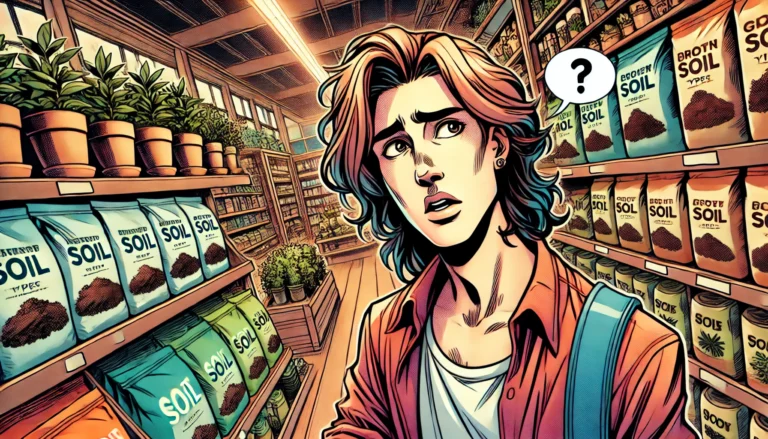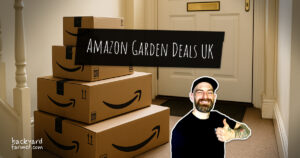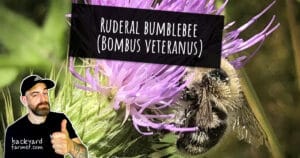Introduction
So, you’ve decided to bring a bit of the outside in, eh? Good on you. But before you start planting your tomatoes in that old pot you found in the shed, let’s talk about the ground beneath their roots—or rather, the soil in their pots.
The quality of your indoor vegetable soil is crucial, like the difference between growing a humble spud or a king’s feast. Whether you’re just dabbling with a few herbs on the windowsill or going full Monty with an indoor veg patch, getting the soil right is half the battle won. And trust me, it’s worth doing it right—your plants will thank you by growing stronger, faster, and producing better yields.
Why Indoor Vegetable Soil Matters
The Foundation of Indoor Gardening
Think of indoor garden soil as the backstage crew in a theatre production. The audience might not see them, but without their hard work, the show would fall flat. Your indoor vegetable soil is exactly the same—working quietly in the background, providing nutrients, moisture, and a cosy home for your plants’ roots. It’s the unsung hero that makes sure your veggies don’t just survive but thrive.
Key Differences from Outdoor Soil
Unlike outdoor soil, which gets a bit of everything from Mother Nature—like rain, worms, and decomposing leaves—indoor plant soil needs a bit more TLC. It’s all about balance: enough nutrients to feed the plants but not so much that you’re raising a garden full of couch potatoes.
And since your indoor garden won’t benefit from earthworms doing their thing, you’ll need to keep an eye on that soil’s health yourself.
Why It’s Crucial for UK Gardeners
Now, if you’re in the UK like me, you know our weather isn’t exactly what you’d call reliable. That’s why indoor gardening can be a real lifesaver, especially if you want fresh veg all year round. But the key to making it work is your soil. Get the right vegetable potting mix and you’ll be pulling up radishes in January and snipping fresh basil while it’s snowing outside.
Choosing the Right Indoor Vegetable Soil
What to Look For in Indoor Vegetable Soil
When choosing your potting soil for vegetables, you want something that’s:
- Lightweight and Well-Draining: No one likes soggy feet, and your plants are no different. A good indoor garden soil should be light enough to let roots breathe but hold enough water to keep them hydrated.
- Rich in Organic Matter: Think of organic matter as the gourmet meal your plants deserve. It’s packed with nutrients that will keep your plants fed and happy.
- Balanced pH Levels: Most veggies prefer a pH level between 6.0 and 7.0. Anything too acidic or too alkaline, and you might as well be planting in gravel.
Comparison of Soil Types
| Soil Type | Characteristics | Benefits | Best For |
|---|---|---|---|
| Organic Soil | Rich in natural nutrients and microbes | Keeps plants healthy, eco-friendly | Most indoor vegetables |
| Synthetic Soil | Contains slow-release fertilisers | Less maintenance, controlled growth | Beginners, fast-growing plants |
| Peat-Based Soil | Lightweight, good water retention | Great for starting seeds, easy to manage | Seedlings, delicate plants |
| Coir-Based Soil | Sustainable alternative to peat, well-draining | Environmentally friendly, good for aeration | Herbs, leafy greens |
Eco-Friendly Soil Choices
If you’re anything like me, you care about what goes into the soil almost as much as what comes out of it. Peat might be the old-school choice, but it’s not exactly winning any awards for sustainability. Coir (from coconut husks) is a brilliant alternative—renewable, great at holding water, and easy on the environment. By choosing coir-based soil or another sustainable potting mix, you’re doing your bit for the planet while growing your greens.
For more information on sustainable gardening practices and the environmental impact of peat extraction, you can visit the Royal Horticultural Society’s guide on sustainable gardening.
Product Recommendations
For 2024, a few soil mixes have been making waves in the UK gardening community:
- Westland Houseplant Potting Mix: Versatile and easy to use, it’s great for a range of indoor plants, including your veggies.
- Levington Organic Blend: Peat-free and enriched with John Innes, this one’s perfect if you’re after an organic touch.
- Coir Compost Blocks: A brilliant, sustainable option that’s easy to store and expands when you add water.
Preparing and Maintaining Indoor Vegetable Soil
Steps for Soil Preparation
Getting your soil ready is like warming up before a run—it might seem like a faff, but it’s worth it:
- Moisten the Soil: Give it a good drink before planting to help those roots settle in.
- Mix Thoroughly: Whether it’s a pre-mix or DIY, make sure everything’s well blended.
- Add Soil Amendments: Depending on what you’re growing, you might want to throw in some compost, vermiculite, or perlite for good measure.
- Check and Adjust pH: Use a pH meter—no one likes to eat a meal that’s too salty or bland, and neither do your plants.
- Fill Containers Properly: Don’t go to the top—leave a bit of room for watering. Overfilling is just asking for a mess.
Ongoing Soil Maintenance
- Regular Moisture Checks: Stick your finger in or use a moisture meter—keep it moist but not waterlogged.
- Nutrient Replenishment: Top up with compost or organic fertilisers like worm castings to keep your soil in tip-top shape.
- Refreshing Soil: Give it a makeover at the start of each season by adding new compost or refreshing the mix entirely.
Enhancing Soil for Better Indoor Vegetable Growth
Why Amend Your Soil?
Soil amendments are like adding a turbocharger to your car—sure, it’ll run without it, but with it, you’re getting peak performance. For indoor gardening, adding a bit of compost or vermiculite can make all the difference.
Common Soil Amendments and Their Benefits
| Amendment | Purpose | Benefits | Usage Tips |
|---|---|---|---|
| Compost | Improve soil fertility and structure | Adds nutrients, enhances soil texture | Mix into potting soil for indoor plants or top-dress regularly |
| Vermiculite | Enhance soil aeration and water retention | Prevents compaction, aids root growth | Mix into container garden soil |
| Perlite | Improve drainage and aeration | Prevents waterlogging, lightweight | Add to vegetable potting mix |
| Worm Castings | Boost nutrient content | Rich in nutrients, promotes healthy microbes | Use sparingly as a soil conditioner |
Practical Tips for Enhancing Soil
- Using Compost:
- If your soil were a soup, compost would be the hearty stock—rich, full-bodied, and just what you need for strong growth. Use it regularly to keep your soil fertile.
- Watering Practices:
- Water deeply but not too often. Let the soil dry a bit between waterings to encourage deep root growth.
- Mulching:
- A layer of mulch helps keep the moisture in and the weeds out. It’s like a warm blanket for your soil.
In addition to using high-quality soil and proper watering techniques, providing the right amount of light is crucial for indoor vegetable growth. Check out our guide on the Best LED Grow Lights for Indoor Gardens of 2024 to ensure your plants get the light they need to thrive
Troubleshooting Common Soil Problems
Identifying and Solving Issues
Even the best soil can have a bad day. Here’s how to spot and fix common problems:
Common Issues and Solutions:
| Problem | Symptoms | Solution |
|---|---|---|
| Poor Drainage | Waterlogged soil, root rot | Add perlite or sand to improve drainage, ensure pots have drainage holes |
| Soil Compaction | Hard, dense soil, stunted growth | Loosen soil with a fork, add vermiculite to improve texture |
| Nutrient Deficiency | Yellowing leaves, poor growth | Apply a balanced fertiliser, refresh soil with compost |
| Pests in Soil | Fungus gnats, root damage | Use sticky traps, dry out soil between watering, consider soil sterilisation |
Preventing Soil Issues
- Regularly Aerate the Soil:
- Avoid compaction by giving your soil a good poke with a fork now and then. This keeps it light and airy, allowing roots to stretch out and grow strong.
- Monitor for Pests:
- Overly moist soil is a magnet for pests like fungus gnats. Let your soil dry out between waterings and set up sticky traps to keep these nuisances in check.
- Watch for Fungal Growth:
- Fungi thrive in wet conditions. Ensure your soil drains well, and avoid over-watering to keep fungal issues at bay.
Conclusion
Indoor vegetable gardening is a brilliant way to bring a bit of green into your home, even if the British weather outside is less than cooperative. But the success of your efforts largely hinges on the quality of your indoor vegetable soil.
By carefully choosing the right potting mix, preparing it properly, maintaining it diligently, and troubleshooting any issues that arise, you can turn even the smallest indoor space into a thriving garden.
Remember, great soil makes for great plants—so don’t skimp on the foundation. Whether you’re just starting out or have been growing your own for years, the right soil for indoor vegetables will make all the difference. Ready to roll up your sleeves and get started? Let’s grow something amazing indoors!





